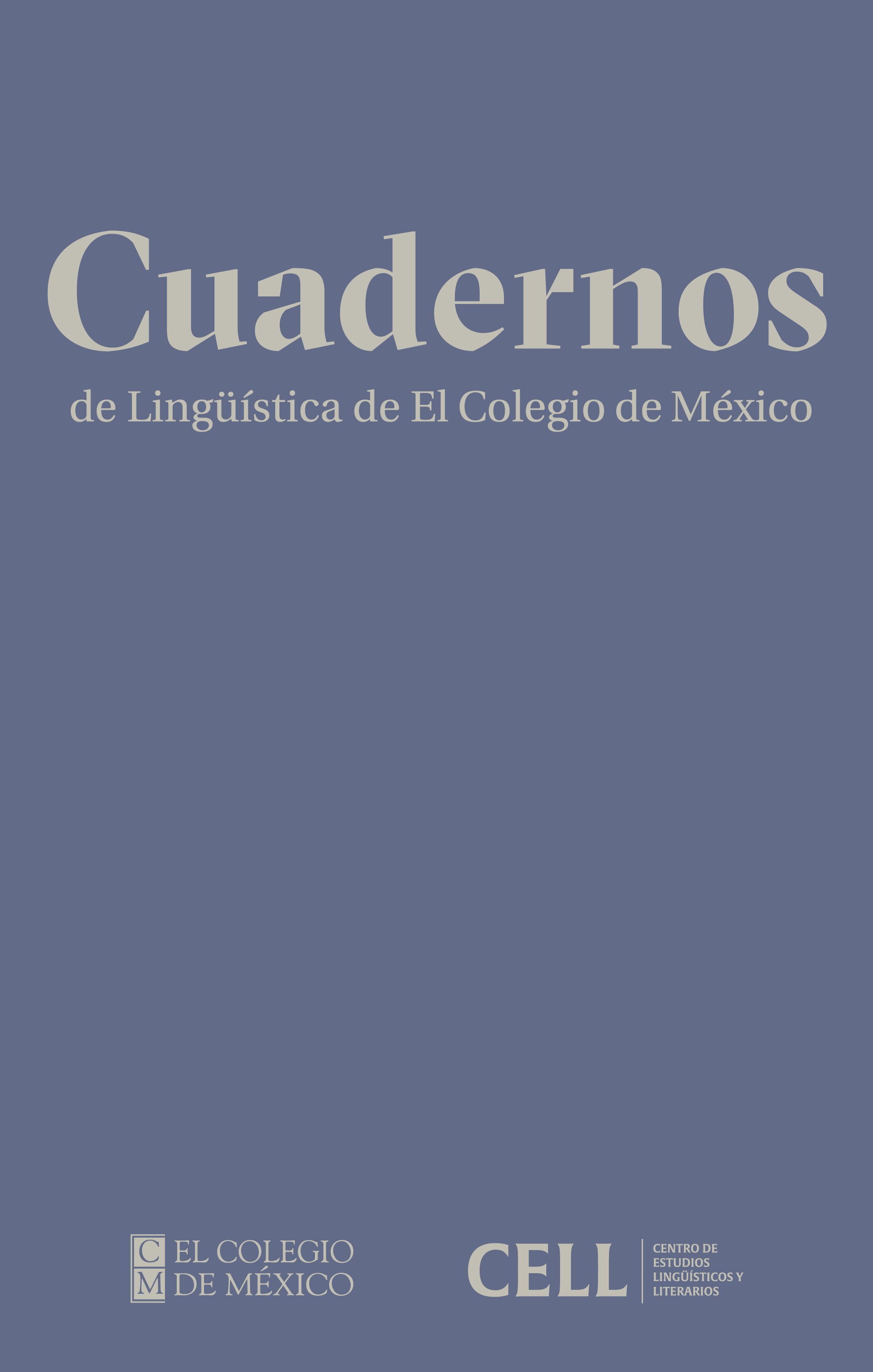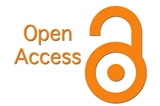Rhetorical question, grammaticalization and markers of modality
DOI:
https://doi.org/10.24201/clecm.v9i0.232Keywords:
rethorical questions, modality, left periphery, grammaticalizationAbstract
The present paper intends to analyze a set of Spanish phenomena of grammaticalization originated in rhetorical questions and expressing different meanings related to modality and the left periphery of the clause. We analyze first “true” rhetorical questions, both total (¿Tiene algún sentido que vayas?) and partial (¿A quién no le gusta el fútbol?); although they are processed in syntax as “true” questions, they are not codified pragmatically as information requests but as assertions involving a systematic semantic inversion in the interpretation of modality, polarity and quantifiers (cf. Escandell Vidal 1984, 1999). Parting on “true” rhetorical questions, we identify different grammaticalized constructions, including the qué “of reply” recognized by Di Tullio (2014) (¿Qué vas a ser bueno?) and the exhortative qué (¿Qué mentís?). In both cases, the qué expresses a clear reject of a previous hypothesis or of some pragmatic situation (or attitude) of an interlocutor. We focus also on structures derived from total indirect rhetorical questions, with an epistemic meaning parallel to the qué “of reply” (e.g., ¿Mirá si la voy a dejar?), and total direct questions, which have an interpretation with an evaluative modality related to emphatic surprise (e.g., ¿No va y le miente?, ¿No va que lo encuentra?). All these constructions have in common that they involve a complex interaction among elements in the left periphery (including interrogation and focus), modality and polarity. After describing their basic grammatical properties, we propose a generative analysis, particularly, from the perspective of syntactic cartography (Rizzi 1997, Cinque 1999).
Downloads
References
Aikhenvald, Alexandra. 2012. The essence of mirativity. Linguistic Typology 16(3), 435–485. doi: 10.1515/lity-2012-0017 DOI: https://doi.org/10.1515/lity-2012-0017
Bosque, Ignacio. 1994. La negación y el PCV. En Demonte, V. (ed.) Gramática del Español, 167–200. México: El Colegio de México.
Chomsky, Noam. 1995. El programa minimalista. Madrid: Alianza. (Versión de Juan Romero Morales).
Cinque, Guglielmo. 1999. Adverbs and Functional Heads: a cross-linguistic perspective. Nueva York: Oxford University Press.
Cinque, Guglielmo. 2006. Restructuring and functional heads. Nueva York: Oxford University Press.
Cinque, Guglielmo & Rizzi, Luigi. 2016. Functional categories and syntactic theory. The Annual Review of Linguistics 2, 139–163. https://doi.org/10.1146/annurev-linguistics-011415-040827 DOI: https://doi.org/10.1146/annurev-linguistics-011415-040827
Coseriu, Eugenio. 1966. Tomo y me voy. Un problema de sintaxis comparada europea. En Coseriu, E. (ed.) Estudios de lingüística románica, 79–151. Madrid: Gredos, 1977.
Di Tullio, Ángela. 2011. Enunciados ecoicos focalizados en el español rioplatense. En González, M. J. & Píppolo, C. (comps.) Español al Sur, 23-34. Montevideo: Consejo de Formación en Educación / Departamento Nacional de Español.
Di Tullio, Ángela & Kornfeld, Laura. 2013. Marcas de modalidad epistémica en el registro coloquial. En Di Tullio, Ángela. (ed.) El español rioplatense: aspectos gramaticales, 83–103. Buenos Aires: EUDEBA.
Dumitrescu, Domnita. 1992. Estructura y función de las preguntas retóricas repetitivas. En Villegas, J. (ed.) De historia, lingüísticas, retóricas y poéticas: Actas Irvine-92, Vol. I, 139–147. Irvine, CA: Asociación Internacional de Hispanistas, 1994.
Escandell Vidal, M. Victoria. 1984. La interrogación retórica. Dicenda: Estudios de lengua y literatura españolas, Nº 3, 9–38.
Escandell Vidal, M. Victoria. 1999. Los enunciados interrogativos. Aspectos semánticos y pragmáticos. En Bosque, I. & Demonte, V. (eds.) Gramática Descriptiva de la Lengua Española, Vol. 3, cap. 61, 3929–3991. Madrid: Espasa.
García Sánchez, Jairo. 2007. Tomo y me voy: expresión plena y elipsis. En Mariscal, B. & Miaja de la Peña, M. T. (eds.) Actas del XV Congreso de la Asociación Internacional de Hispanistas “Las dos orillas”, 163–176. México: Fondo de Cultura Económica/ Asociación Internacional de Hispanistas/ El Colegio de México.
Gómez Torrego, Leonardo. 1999. Los verbos auxiliares. Las perífrasis verbales de infinitivo. En Bosque, I. & Demonte, V. (eds.) Gramática Descriptiva de la Lengua Española, Vol. 2, cap. 51, 3323–3389. Madrid: Espasa.
Kornfeld, Laura Malena. 2014. Lecturas alternativas del futuro. Usos y significados de la perífrasis ir a + infinitivo. Traslaciones 1(1). 8–29.
Kornfeld, Laura. 2019. Expresión de la sorpresa, miratividad y gramaticalización
de verbos inacusativos en español. Borealis 8(2). 165–197. DOI: https://doi.org/10.7557/1.8.2.4913 DOI: https://doi.org/10.7557/1.8.2.4913
Laka, Itziar. 1990. Negation in Syntax: On the Nature of Functional Categories and Projections. Massachusetts: MIT. (Tesis doctoral).
Rizzi, Luigi. 1997. The fine structure of the left periphery. En Haegeman, L. (ed.) Elements of Grammar, 281-337. Dordrecht: Kluwer. DOI: https://doi.org/10.1007/978-94-011-5420-8_7
[RAE] Real Academia Española. 2010. Manual de la Nueva Gramática de la Lengua Española. Madrid: Espasa Calpe.
Published
How to Cite
-
Abstract937
-
PDF (Español)326
-
XML (Español)413
-
EPUB (Español)33
-
Kindle (Español)80
-
MP3 (Español)31
Issue
Section
License
Copyright (c) 2022 Laura Malena Kornfeld

This work is licensed under a Creative Commons Attribution-NonCommercial-NoDerivatives 4.0 International License.
Authors retain copyright of their work and are free to disseminate it, make copies for any use, and/or deposit in any repository or archive of their choice, but they grant Cuadernos de Lingüística de El Colegio de México the right to publish the work for the first time. Authors agree to acknowledge Cuadernos de Lingüística de El Colegio de México as the site of original publication of their article / note / review through proper citation.
Articles appearing in Cuadernos de Lingüística de El Colegio de México are made available to readers under a Attribution-NonCommercial-NoDerivatives 4.0 International.









